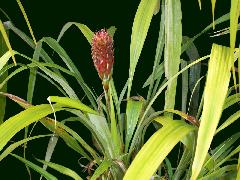
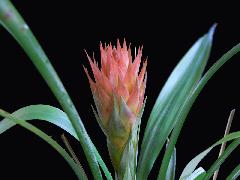
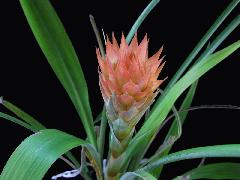
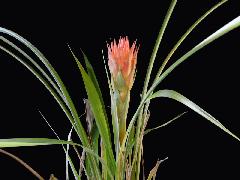
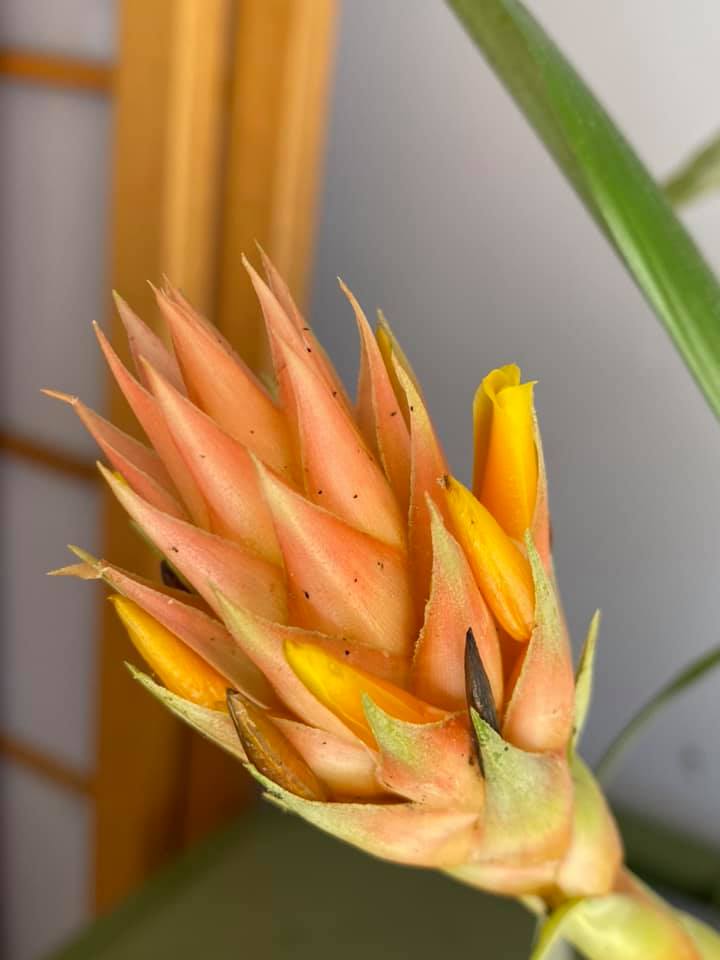
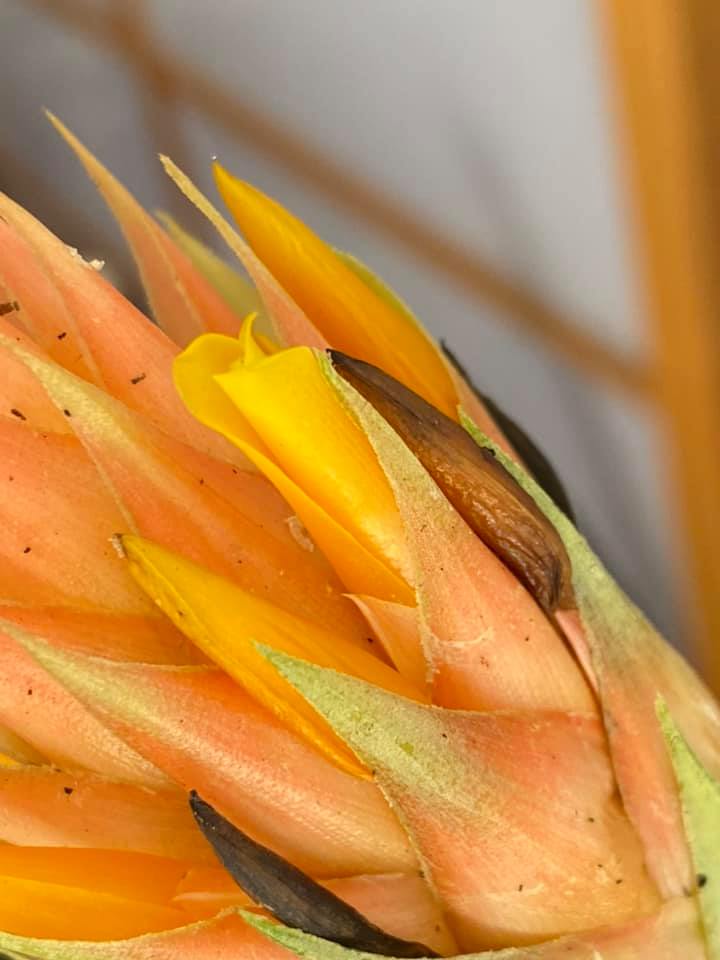
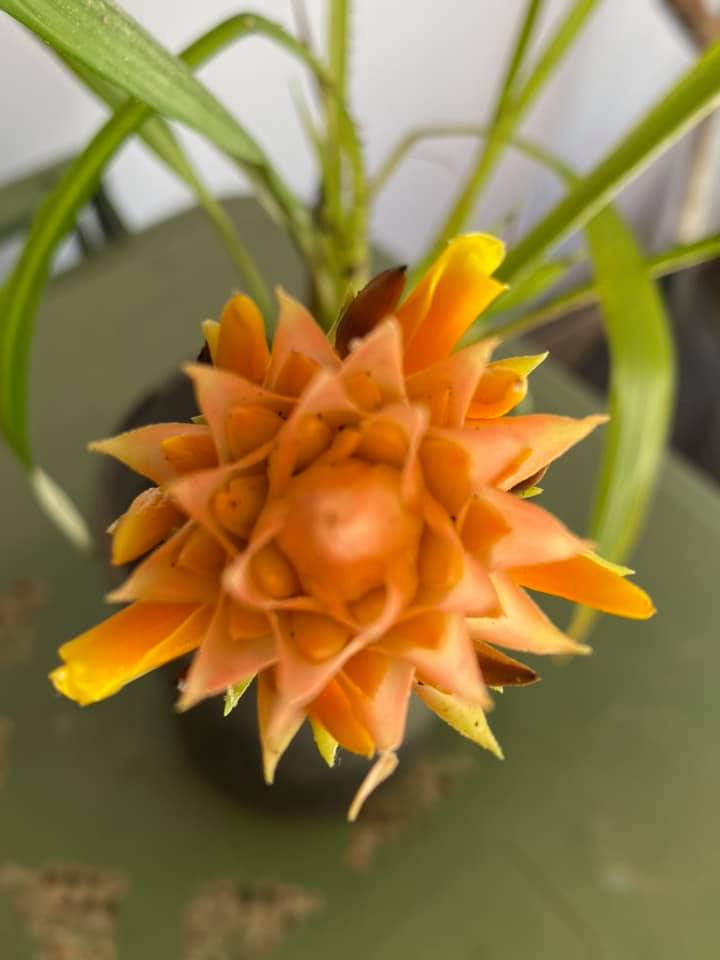
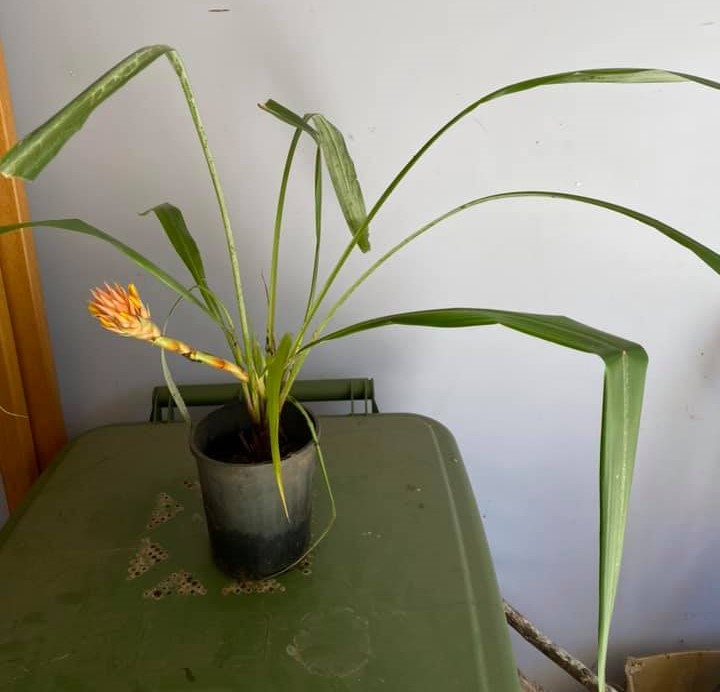
Plant terrestrial, densely clustering, stemless, 0.4-0.6 m tall.
Leaves polymorphic, rosulate, spreading, the larger leaves 0.6-1.25 m long.
Leaf sheaths triangular, 3-6 x 2-4 cm, entire, castaneous, lustrous, glabrous adaxially, pale lepidote abaxially.
Leaf blades absent or much reduced or pseudo petiolate, the pseudopetiole 10-65 cm x 5-10 mm, channeled, pale lepidote abaxially, laxly serrate with brown, antrorse or retrorse spines 1-3 mm long, the blade narrowly lanceolate, acute to attenuate, 20-45 mm wide, channeled, dark green and glabrous adaxially, densely pale lepidote abaxially.
Scape curved-ascending, 20-45 cm x 5-12 mm, glabrous, green to brown.
Scape bracts erect, laxly imbri¬cate, exposing the internodes, the sheath ovate, lustrous, nearly glabrous, dark castaneous, the blade subfoliaceous, attenuate, green, densely pale lepidote abaxially.
Inflorescence cylindric, 8-15 x 4-5 cm, densely polystichous-flowered.
Floral bracts erect, triangular to elliptic, attenuate, 40-52 x 18-22 mm, thin coriaceous, even, castaneous at the base, orange to red.
Flowers sessile, erect.
Sepals narrowly oblong, slightly asymmetrical, acute, 20-23 x 10-11 mm, even to slightly nerved, the adaxial pair carinate, yellow to orange.
Corolla erect, regular, not at all zygomorphic.
Petals ligulate, obtuse, 37-38 mm long, each with a single broad, erose, basal appendage 11 mm long, bright orange-yellow.
Ovary ca. 2/ 3 inferior. Ovules immature, poorly developed, apparently caudate.
Type. S. & H L. Smith s.n. (SEL, holotype). Peru: Loreto, banks of the Rio Napo at the confluence of the Rio Amazonas, 1983, S. &. H.L. Smith legit, flowered in cultivation 25 Jan. 1989.
Pitcairnia smithiorum has become a popular horticultural subject in Florida since its introduction in 1983. The name honors the collectors, Sam and Hattie Lou Smith of Fort Myers, Florida. This new species appears to be related to P. sceptigera of western Ecuador but is smaller in all parts with basally castaneous scape and floral bracts and a regular (not at all zygomorphic) corolla. As mature seeds have not been seen, there is some uncertainty as to its taxonomic placement; however, the distinctly polymorphic foliage and erect, regular corolla are unknown in Pepinia.